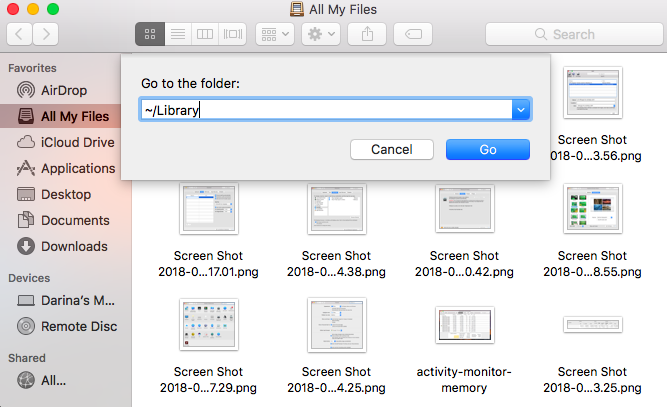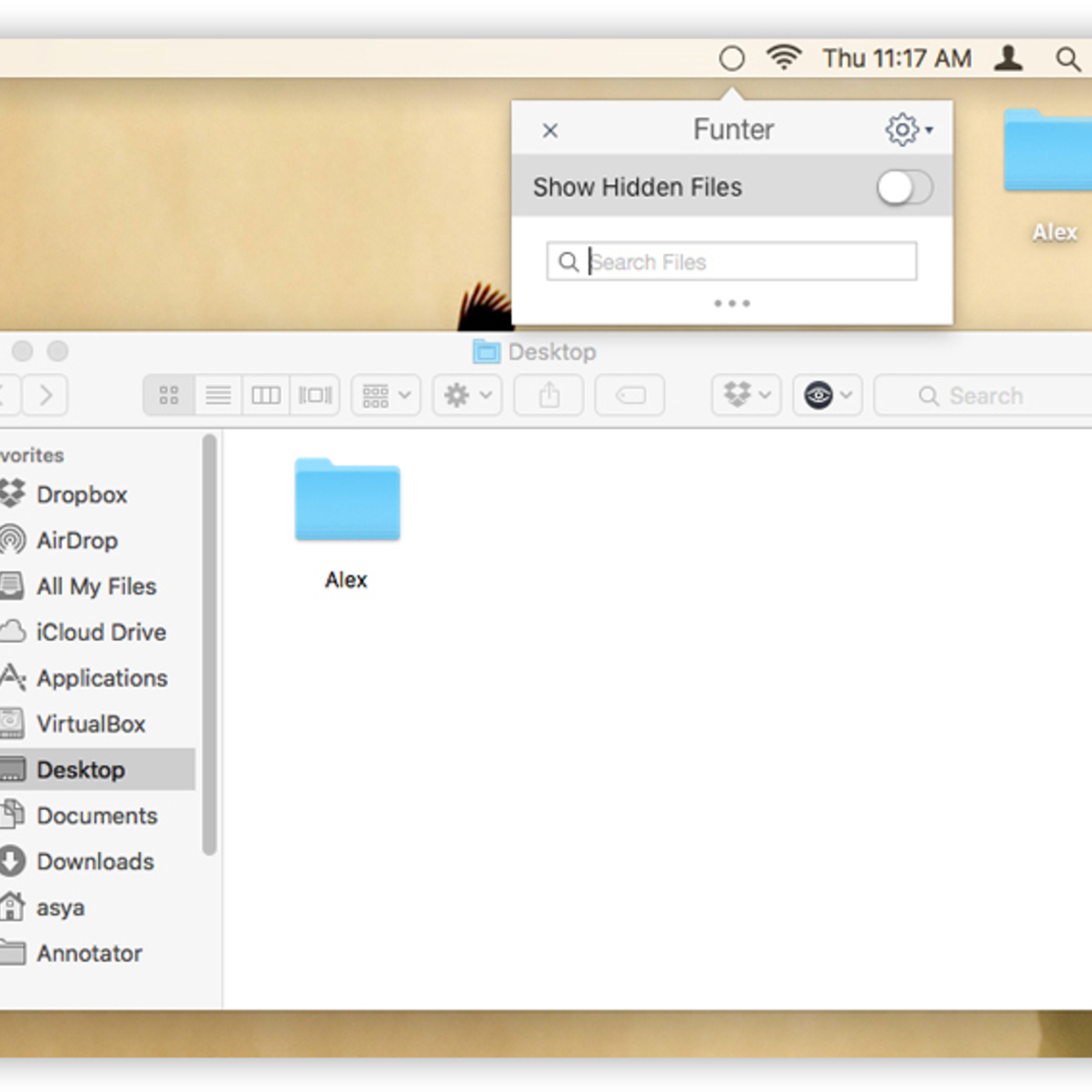- Show Hidden Files Mac Os
- Mac Os X Show Invisible Files Apps
- Mac Os Files Download
- Best Mac Os X Apps
- Mac Os X Show Invisible Files App Free
Spotlight is a great tool for finding documents, music, and other files on your Mac, but it won't search for certain kinds of files. If you need to locate a specific hidden, packaged, or system. Jun 24, 2020 As a Mac owner, if you want to show those hidden files in Mac OS X, here is a method. Mac Terminal is one of the most popular apps used and eulogized by experts. This app allows you to control Mac OS X by using the command line to enter Unix commands. In a way, Terminal works as car bonnet, which you can open and check entire engine. The Show All Files application also provides a minimalist interface that allows you to toggle the files visibility with the press of a button. Enables one to create custom lists of files that should stay hidden. The top Show All Files buttons will quickly show or hide the files that are hidden.
In Terminal, type chflags hidden and then drag a folder or file you want to hide into the Terminal window; you can still access those hidden folders and files by summoning the Go To Folder dialog.

Best FTP client for Mac
Show Hidden Files Mac Os
When you look at your desktop, or inside any folder for that matter, on your Mac you’ll see a number (one that will vary depending on how well-organized you are) of file and folder icons. What all of us have in common, however, is a huge range of system files that are hidden just out of view.
Cons:Left Behind: Some apps like Messages, Reminders, and Game Center still look the same: dated or just plain ugly.Closed: With all the notification updates, it also leaves you wanting more from other third-party apps. Supported services include Facebook, Twitter, FaceTime, e-mail, instant message, calendar events, and reminders.Power: Mavericks revamps the way your Macbook allocates its system resources to save power and keep your apps running smoothly by drastically reducing processor consumption for inactive windows. Mac os x 10.12 download free. Final Verdict:In a semi-surprising but understandable move, Apple has released a major update that noticeably improves the overall experience of the OS X line for both new and older machines - for free.
Convert quotes into invoices in a single tap.– Get paid by debit or credit card — make it easier for your customers to pay you.– Send customers friendly, automatic email reminders to let them know when invoices are due (Available on Pro plans and up).– Keep track of your business receipts and generate reports of business performance with your own dashboard.– It’s easy! Quote and invoice software for mac.
Easy way to show hidden files
Try Setapp to make all your files visible on a Mac. With the tools we offer, nothing gets lost in the shuffle.
Those of us who have lived online for long enough will remember the Delete System32 hoax, with which trolls encouraged naive PC users to delete their Windows 2000 system directory. It’s not a shock that, since those days, developers have taken more care to hide away files that are essential to their operating systems.
There are, however, times when you need to access those files. Most of them are hidden away in the ~/Library folder, but the truth is that the average Mac holds a treasure trove of files and folders that you either no longer need or may want to access for troubleshooting purposes.
Is it normal that 'System' takes up 90GB+ of storage? What does it contain? How to get your System folder under control?
Three Ways to See Hidden Files on Mac
There’s good news for anyone out there who’s looking to access hidden files on their Mac: you can do exactly that, in a number of different ways, by arming yourself with a little bit of knowledge. There are a couple of Finder augmentation and replacement apps, for example, that make the process as easy as clicking a single button.
Before kicking off, however, it’s important to highlight that you should play it safe when digging through hidden files on your laptop or desktop. Unless you know exactly what you’re looking for you can do some serious damage to your operating system, so you’ll want to proceed with caution. After all, these files are hidden for a reason!
See hidden files on Mac via Finder
As mentioned above, it doesn’t take much to make the hidden files on your Mac visible. In fact, you can check out all of the hidden files on your Mac by following just three easy steps:
- In Finder, open up your Macintosh HD folder
- Press Command+Shift+Dot
- Your hidden files will become visible. Repeat step 2 to hide them again!
This process will also work elsewhere, including your Documents or Applications folders. However, if you know what you’re looking for is in your ~/Library folder and would rather jump straight into that then you can take the following steps instead:
- In Finder, hold down Alt and click Go at the top of your screen
- Click on Library to open up the, normally hidden, folder

Be prepared for one very cluttered looking Desktop if you decide to uncover all the hidden files there. If you’re anything like the average Mac user, most of what you’ll find will be made up of system files and autosaved Microsoft Word documents!
Some users have reported success finding documents that they thought were lost forever after their Mac crashed without saving, which is always a useful tip to have in the back pocket.
Mac Os X Show Invisible Files Apps
Unhide files on Mac with Terminal commands
Terminal, a Mac command-line interface, is included in macOS by default and allows you to use command prompts to control your Mac instead of following a potentially complex series of instructions to do the same thing in Finder.
If you’re already familiar with using Terminal, then you might prefer to run the following script to reveal your hidden files:
- Open Terminal
- Enter the following: defaults write com.apple.Finder AppleShowAllFiles true [Press Return] killall Finder
- To hide files again, change the “true” in the step above to “false”
It doesn’t matter too much whether you use Terminal or Finder to make the hidden files on your Mac visible, though you might prefer the latter if you’ve never run scripts on Terminal before, as both routes accomplish the same thing.
One reason you might opt to use Terminal is that it allows you to hide any file or folder on your Mac, which is a great way to avoid that sense of residual curiosity felt by others should they come across a password protected .rar on your desktop! To hide files, just:
- Open Terminal
- Enter the following: chflags hidden [Press Space]
- Drag files or folders to be hidden from Finder into the Terminal window, which will display their paths in Terminal
- Press Return to hide
To make your files visible again, just repeat the above steps using “chflags nohidden” in place of “chflags hidden.” Of course, the fact that anyone else who knows this trick can also use it to unhide your files means that this isn’t an adequate substitute for other security measures.
Use file managers to access hidden files
How to find the path of a file in Mac? Apps like DCommander and Forklift, both of which perform like native macOS apps and function as extensions of Finder, represent great choices if you’re at all uncomfortable using Terminal or digging around in your ~/Library folder.
Because these apps allow you to make hidden files and folders visible (or invisible) using shortcuts or clicking buttons within the apps, they make the whole process incredibly simple. In Forklift, for example, you can show hidden files by:
- Clicking View
- Selecting View Options towards the bottom of the dropdown menu
- Checking the box next to Show Hidden Files
There’s also a button in the toolbar to show and hide hidden files. DCommander has a similar function available, with a Show System Files command, but you need to add it manually to the app’s toolbar:
As you might guess from those subtle differences in terminology, we would suggest that Forklift is more suitable for someone looking for something that really looks and acts like Finder. DCommander, with a larger range of features and toolbar buttons enabled by default, is still intuitive but feels a little more dense.
Whichever you settle on remember that just because these apps make accessing hidden files easy it doesn’t mean that you can’t do some real damage if you start messing around with the wrong thing! Mac network site survey software download.
Try all these apps for free
Get a huge set of top apps for keeping your Mac in shape. Best utilities in one pack, give it a go!
Leave hidden files to automatic cleanup
For some Mac users, the question of how to see hidden files is nothing more than succumbing to curiosity. For others, it’s a necessity for troubleshooting a piece of software or device that’s not performing as it should.
Somewhere in between are those in the pursuit of a few spare gigabytes as their hard drive rapidly fills up. If you’re one of those people looking to clean up useless hidden data then an app like CleanMyMac X might be exactly what you need:
- Open up the app and select Smart Scan
- Hit Scan
- Select Review Details underneath Cleanup to see how much System Junk you can safely delete
- Hit Run to remove those unneeded files
An app like CleanMyMac X will free up space just as effectively, probably more so, than you’ll be able to by randomly deleting hidden files and hoping for the best. If you do end up going this route then don’t consider learning more about hidden content a waste of time — at least you know what to watch out for if someone tries to troll you into deleting vital system files!
Best of all, DCommander, Forklift, and CleanMyMac X apps mentioned above are all available for a free trial through Setapp, a collection of more than 150 macOS apps from top developers all over the world.

As a hybrid of Unix and Mac operating systems,Mac OS X has a few different ways to hide files:
- Some files and folders have special flags associated with themthat tell the Finder not to display them. This behavior isinherited from older versions of Mac OS.
- Any file or directory that begins with a period ( . )will be considered invisible by the Finder. This behavior is inheritedfrom Unix.
- In the top level of your hard disk, there may be an invisible filecalled
.hidden. The Finder will not display any file ordirectory name listed in this.hiddenfile. In olderversions of Mac OS X, this was a way to hide Unix directories thatmost users don't need to access. It is still supported in currentversions of Mac OS X, but isn't there by default.
To search for any kind of invisible file in OS X, follow theappropriate directions below:
OS X 10.5 and later
Mac Os Files Download
- With the Finder active, from the File menu, selectFind...
- In the
Searchingwindow that opens, select how broadyou want the search to be. For example, you can choose to search yourentire Mac or just your home folder. In the pull-down menu labeledKind, choose Other.., and in the sheet thatappears, find and double-click File Invisible. In thepull-down menu to the right of the first one, select whether you aresearching for Visible Items, Invisible Items, orboth. The search will then begin. - To narrow your search, you can add additional search criteria,such as a filename, file size, or creation date. Each time you clickthe + (plus sign) on the right side of the search window, youwill add another row to the search criteria.
To include operating system files, which are normally excluded fromthe search, click +, then in the pull-down menu labeledKind, choose Other... In the sheet thatappears, find and double-click System Files. In thepull-down menu to the right of the first one, select whether or notyou want to include system files in your search.
Best Mac Os X Apps
OS X 10.4
Mac Os X Show Invisible Files App Free
- With the Finder active, from the File menu, selectFind...
- In the
New Searchwindow that opens, select how broadyou want the search to be. For example, you can choose to search yourentire computer or just your home folder. In the pull-down menulabeled Kind, choose Other.., and in thesheet that appears, find and double-click Visibility. In theVisible or Invisible pull-down menu to the right, selectwhether you are searching for Visible Items or InvisibleItems. The search will then begin. - To narrow your search, you may add additional search criteria,such as a filename, file size, or creation date. Click the +(plus sign) on the right side of the search window. Each time youclick it, you will add another row to the search criteria.
Comments are closed.